Results 1,471 to 1,480 of 12094
Thread: Anandtech News
-
01-13-12, 01:11 PM #1471
Anandtech: Sumitomo Electric's Thunderbolt Cable
Since the launch of Thunderbolt the only cable supplier has been Apple. Given that no current Thunderbolt devices come with a Thunderbolt cable (save Apple's own Thunderbolt Display which comes with one for video input), anyone who wanted to use Thunderbolt had to pick up a cable at the Apple store for $50. Sumitomo Electric started shipping its Thunderbolt cables at the end of last year and Intel had a pair at CES this week. They are functionally identical to Apple's cable but come in a dark grey instead of white. No word on pricing unfortunately, although I do know that there's a definite push to drive the cable cost down this year.
More...
-
01-13-12, 01:30 PM #1472
Anandtech: AOC's Thunderbolt Display
This one was pretty low key but AOC had their own Thunderbolt display at Intel's booth. No word on pricing or availability but hopefully we'll see more Thunderbolt equipped panels later this year, after Ivy Bridge systems start shipping with Cactus Ridge.
Gallery: AOC's Thunderbolt Display
More...
-
01-13-12, 05:20 PM #1473
Anandtech: IDT at CES : Touchscreen Controllers and Display Port Solutions
Home theater enthusiasts might identify IDT (Integrated Device Technology) with the HQV benchmark and video processor. That division of IDT was sold off to Qualcomm last September. But, that didn't stop us from stopping by IDT's CES suite to understand the reasons and also find out more about the products introduced by them at CES in the CE market.
While application processor manufacturers get a lot of attention for their SoCs, a good CE product needs more than just a good app processor. How many times have we seen a good tablet let down by sub-standard touchscreens or bad audio? It is quite interesting to analyze the mixed-signal ICs behind these technologies. IDT provides multiple mixed-signal solutions for touchscreens, audio codecs, video display controllers and power management solutions.
Capacitive Touch Controllers
Last year, IDT demonstrated the first PureTouch capacitive touch screen controllers, and this CES, they showed off a few design wins.
The Hanvon e-Reader (popular in the Chinese market) uses two LSD6107 controllers to provide the two sliders on either side of the e-Ink screen.
This year, IDT launched and demonstrated their next-gen PureTouch single layer multi-touch capacitive touch screen controller. Most capacitive touchscreens are dual layer (for a good overview of the various touch technologies available, refer to this (PDF) short course slides). By using a state machine design rather than a microcontroller, IDT claims both power consumption and cost are reduced compared to other competing solutions.
Display Port Solutions
Display Port is stepping up its game by offering more features necessary for the PC market. With eDP (Embedded Display Port), they are also targeting tablet panels (which are predominantly LVDS based right now).
IDT presented two innovations in this space. The first one invovled timing controllers for the PSR (power self refresh) panels which retain a displayed frame in a local buffer and can put the source driver in low power mode if the screen contents are not changing. Thus, the driver doesn't need to really keep refreshing the display's frame buffer again and again. This is part of the eDP 1.3 specifications and IDT is currently sampling this timing controller.
For desktop displays, IDT was also demonstrating a member of the IDT PanelPort ViewXpand family, the IDT VMM1400 multi-monitor controller. It allows the user to connect up to four monitors with different resolutions over a single Display Port connection. A three monitor setup with this controller was also on display at the Display Port booth.
In addition, IDT also demonstrated some of their power management solutions (where they are trying to integrate more functionality in order to reduce BOM cost of the system) and advances in the audio codec lineup.
More...
-
01-14-12, 02:30 PM #1474
Anandtech: Crucial Provides a Firmware Update for M4 to Fix The BSOD Issue
Last week, we wrote about the BSOD issue that Crucial's M4 SSDs were experiencing. After 5184 hours (yes, that's the specific number) of active use, the SSD started to cause blue screens of death (i.e. BSODs) every hour or so. Originally, the fix was scheduled for next week but fortunately Crucial was able to release the firmware update yesterday. The firmware version is 0309 and can be downloaded here. It's recommended for all Crucial M4 SSDs, even if you are not experiencing the BSOD issue as it will prevent it from happening.
The earliest reports indicate that the update does fix the BSOD issue, although it will take at least several days before we can be sure of that. User Vivio at Crucial forums has already run benchmarks and the update appears to be a pure bug fix, as the performance is the same as with the older 0009 firmware (see Anand's review).
More...
-
01-14-12, 06:00 PM #1475
Anandtech: Why Thunderbolt Won't Come to the iPhone Anytime Soon
Before CES there was a bunch of silliness floating around about how Apple might bring Thunderbolt to the iPhone based on a creative interpretation of an Apple patent. Some folks even theorized that Thunderbolt would bring about faster sync. I meant to address the speculation before CES but I never got the chance to. Now that I'm done with most of what I needed to cover from the show, I can get to what I planned on earlier.
Lightpeak, the basis of Thunderbolt, was an Intel designed spec. When it came time to productize it, Apple and Intel collaborated to turn it into Thunderbolt. According to Intel, the bulk of their technology collaboration with Apple focused on the cable and connector design. The spec itself and the Thunderbolt trademark both remain property of Intel. Apple did some of the initial trademark filing for Thunderbolt, but eventually transfered ownership to Intel.
Intel is the sole owner of the Thunderbolt spec. Building Thunderbolt devices requires a license to use the spec but no royalties need to be paid to Intel. Intel is also the only supplier of Thunderbolt controllers. Without Intel's permission, no other company can make a Thunderbolt controller.
This last point is extremely important. The chances of Intel building a Thunderbolt controller for an ARM platform are very slim. Intel could eventually allow Apple and other companies to make their own Thunderbolt controllers, but that decision is Intel's alone to make.
Furthermore, Thunderbolt requires both DisplayPort and PCIe (x4) interfaces to work. To the best of my knowledge, no modern ARM based SoC (Apple's A5 included) features DP and sufficient PCIe lanes. Apple could admittedly add support in a future SoC, but again, Intel would have to build a controller designed for low power operation in a smartphone or tablet. The cost of the controller would also have to be reduced significantly. Current Thunderbolt controllers cost between $20 - $30, that's just as much if not more than Apple spends on building the A5. Thunderbolt controllers will eventually get down to the single digit dollar values, but not anytime soon.
Thunderbolt supports some extremely high speed signaling, which complicates board design, also contributing to higher costs. The cables are also fairly pricey, which Apple would presumably have to include in the box if TB were to truly supplant USB as the iDevice sync cable of choice. Finally, for today's usage models, Thunderbolt makes no sense to deploy on a smartphone or tablet. The NAND used in high-end mobile devices is 2-bit MLC in a single package of 1 - 8 die depending on storage capacity. The NAND is typically paired with a controller either on-package or integrated into the applications processor (this is how the iPhone works). That controller is good for performance in the tens of megabytes per second, not anywhere close to the 1GB/s that Thunderbolt can offer. Headroom is the enemy of good low power design. Implementing an interface that can transfer at 1GB/s when you're only going to use 5% of that is not good engineering.
Thunderbolt was built to further enable the notebook as a desktop usage model, and to enable notebooks to continue to shrink in size by allowing extra controllers and functionality to be delivered through external devices without compromising performance. Smartphones were never the target for Thunderbolt to begin with.
It's clear that WiFi will be used for both sync and driving external displays at some point in the not too distant future. With 802.11ac we'll likely be able to exceed the performance of NAND, even as ONFI 3.x based NAND arrives later this year and in 2013. Apple has already implemented AirPlay on the iPad and iPhone 4S, enabling some form of wireless display support. As WiFi Direct and WiFi Display become more prevalent however, this will likely be the path to connect smartphones/tablets to external displays.
All modern mobile SoCs include a hardware video encode block that is very low power. It's far more efficient to simply dump the frame buffer into a video, encode it in real-time to H.264 and transmit the low bandwidth signal over WiFi Direct to a display for decode/display. Using Thunderbolt in this case just wouldn't make sense. Mobile devices are all about portability and removing wires, not adding faster, more power hungry ones.
That's what I believe will happen. Apple may eventually move to USB 3.0, but sync and external displays will be done over wireless technologies. Thunderbolt remains a very high performance spec that we'll see limited to notebooks and desktops for the foreseeable future.
More...
-
01-14-12, 08:20 PM #1476
Anandtech: AMD Clarifies 7000M Strategy
CES has wrapped up now and we’re all back home, but we’ve still got a few items to cover. While Anand was meeting with AMD on Thursday to go over some other their other tech, I got a chance to head into a separate area for a briefing on their mobile technology. There are two items I want to quickly discuss: the Radeon 7000M lineup, and Trinity.
We’ve already covered some of the 7000M parts that will ship in the very near future—quite a few laptops at CES were running these “new” GPUs. The 7400M, 7500M, and 7600M are all VLIW5 parts, which we’ve called “rebadged” GPUs. AMD pointed out (and we at agree at least in part) that calling these rebadged GPUs is a bit too harsh—reused or recycled might be a better term, particularly if you’re into the whole “green” thing. But seriously, the latest 7000M GPUs aren’t just a straight rerelease of the same silicon under a new name; we’ve pointed out in the past that as time passes, companies become more familiar with a process technology, both on the fabricator side and on the chip designer side. This is why initial 40nm GPUs don’t offer all the performance and features of later model 40nm GPUs for example. AMD didn’t specifically state that the 7400M/7500M/7600M will use a new revision/spin of the existing Northern Islands cores, but it was at least implied, and it’s likely that we’ll see slightly better performance and power characteristics out of the latest batch. You can see the released specs and expected performance in the gallery below.
Gallery: AMD Clarifies 7000M Strategy





Okay, that’s part one of the 7000M strategy: reuse the existing Northern Islands family to occupy the value and mainstream price segments. The second part of the strategy, we don’t have any specifics to reveal in terms of specs, but AMD did let us know one important piece of information. They have in essence drawn a line in the sand (e.g. in their product portfolio), and everything 7600M and below will reuse their existing 40nm VLIW5 architecture while all of the yet-to-be-announced parts above 7600M (7700M/7800M/7900M) will switch to 28nm GCN (Graphics Core Next). It sounds like the mobile GPUs will use lower power variants of “Pitcairn” and “Cape Verde”, leaving “Tahiti” as a desktop-only GPU for the time being, but features like DX11.1, VCE, and ZeroCore Power Technology will be present in the higher performance 7000M parts when they launch. And just when will that be? AMD wouldn’t give us a date, but all indications are we’ll see the 7000M Southern Islands GPUs in the April/May timeframe.
AMD had a couple of laptops (okay, monstrous DTR beasts really) running in their booth to show that they had working silicon for both classes of 7000M hardware. Both notebooks are Clevo X7200 units using desktop CPUs, so they’re more proof of concept than something that most people are going to buy, but they were both happily running 3D applications. The notebook on the left has a single HD 7690M running a custom AMD demo, while the notebook on the right has CrossFire high-end 7000M hardware (presumably something in the HD 7900M class) running Aliens Vs. Predator 2.
Finally, a few people continue to ask questions about Trinity hardware. Obviously Trinity was running in a couple demonstrations, but AMD is not yet disclosing the full hardware specs. Some have speculated that Trinity will have a GCN-based graphics core, but if you stop to think about it for a minute that’s obviously not going to happen. GCN is coming out on TSMC’s 28nm process technology while Trinity will use GLOBALFOUNDRIES’ 32nm process; as AMD is busy trying to work on the improved Bulldozer cores in Trinity along with upgrading the GPU, trying to bring GCN into the mix would seriously delay the whole process. The short story is that AMD (again) confirmed that Trinity is using a VLIW4 core for graphics, and it offers enhanced performance relative to the core in Llano. We’ll hopefully have final hardware in hand in the next few months to provide the full performance analysis.
More...
-
01-14-12, 08:50 PM #1477
Anandtech: Sony Shows Off VAIO Slider Concept
We’ve seen a lot of laptop ideas come and go over the years. One that seems to periodically resurface is the slider, a device that can function as a laptop in normal mode, or it can slide all the way open until the display sits on top of the keyboard and it’s in tablet mode. ASUS had the Eee PC Slider SL101 last year, but they seem to be leaving that behind and going more with the Transformer design for 2012. Sony had their own slider tablet/laptop concept on display at their booth, including a stylus to go along with the device. The hybrid system was behind glass and as a concept there’s no information on the hardware or software running inside the chassis, but for those interested in something other than the standard tablets, let Sony know you like their concept—or not.
Gallery: Sony Shows Off VAIO Slider Concept
More...
-
01-14-12, 09:10 PM #1478
Anandtech: Hands on with Samsung's Line of New Notebooks
Samsung showed off a completely new line of notebooks at CES, and we've gotten to go hands on with all of them. In addition to the refreshed Series 9 ultraportable that we saw earlier, Samsung was showing off the new Series 5 and Series 5 Ultra, the Series 7 Chronos, and the Series 7 Gamer.

The new Series 9 comes in 13" and 15" variants, compared to 11" and 13" variants for the original S9. With the S9 refresh, Samsung basically fixed every design related complaint leveled at the S9 and then slimmed the entire system down for good measure. The glossy plastic on the LCD bezel and interior of the notebook is gone, as are the hidden drop-down ports, and the gorgeous matte display panel gets a much needed bump in resolution to 1600x900. Samsung claims a 400nit brightness for both generations of the Series 9, and we measured the original at 394 nits max brightness and a 520:1 contrast ratio. The new one looks to be similarly great - if every notebook had a panel like this, we would never complain about notebook displays again. Samsung has moved the S9 over to an anodized aluminum unibody chassis (sound familiar?) allowing them to cut the weight of the 13" model to 2.5lbs (from 2.8) and reduce thickness to an anorexic half-inch. The slow selling 11"er has been dropped from the lineup, replaced by a larger 15" model. I use the term larger very loosely, as the 15"er weighs just 3.3 pounds and strikes a footprint smaller and thinner than most of the new 14" ultrabooks on display at the show. The Series 9 is slated to show up in Q2 for $1399 and 1499 price points for the 13" and 15" models, respectively, and will be sold alongside the original Series 9 systems until Q3.

Staying with the ultraportable theme, Samsung also launched the Series 5 Ultra, a mainstream ultrabook featuring 13" and 14" models. Samsung is speccing these with the standard ultrabook fare - low voltage Core i5 processors, 4GB of memory, a 500GB hard drive with 16GB express cache, optional SSDs, and 8 hours of battery life. The express cache drive is borrowed from the Series 7 Chronos, a feature that Anand will go more in depth on in a later post. The 14" S5 Ultra is notable for having a built-in optical drive, a rarity in the ultrabook class. Both the 13" and 14" models have matte, 300 nit 768p displays, and it's really nice to see Samsung pushing for good quality displays throughout its notebook lineup. The S5 Ultras are both relatively heavy, at 3.5lbs for the 13" and 3.95lbs for the 14". They're not heavy by normal standards, but compared to many of the other ultrabooks on display, they're definitely not light. The S5 Ultra will start at $899 for the 13"er and $949 for the 14", while the SSD option will cost you $200 on the 13" model. Both models will be available on January 30th.

The mainstream Series 5 notebook looks to be a very solid mid-range option that is set to ship when Ivy Bridge launches later this year. There are two models, a 15.6" (900p) and a 17.3" (1080p), both with matte 300-nit displays. Starting price is expected to be in the $799 range for the 15.6" model, and the spec list includes Ivy Bridge i5/i7 CPUs, Nvidia's GT650M with Optimus, up to 2TB of storage in the 17", Blu-ray, and JBL speakers. For a mid-range media oriented system, it looks to be very full featured and well specced, and given the quality of the display, the Series 5 is definitely a notebook to look out for in the second half of this year.
Gallery: Samsung's New Notebook Lineup





The Series 7 Chronos is a notebook that's been out since late last year in 14" and 15.6" forms, and Samsung snuck in a 17" variant at CES. The 17"er comes with a 1080p matte display with a 300nit brightness, along with IVB Core i7 quad-core CPUs, next-gen ATI graphics, JBL speakers, and the same express cache technology as the smaller S7 Chronos systems and the S5 Ultra. Pricing is expected to be in the $1500 range, and availability is slated for the Q2-Q3 timeframe.

The Series 7 Gamer is the largest and most ostentation system that Samsung was showing off, in a variety of bright and loud colors. It's available in your choice of bright yellow, orange, and red, as well as a (slightly) more understated black. Spec-wise, it's pushing an i7 quad, AMD's HD6970M with 2GB of vRAM, JBL speakers, and the same 1080p panel as the 17" S7 Chronos. The keyboard has blue backlighting, except for the WASD keys, which are highlighted in red. The system is gargantuan in size, rivaling things like the ASUS G74 and Toshiba's Qosmio X770. It's expected to show up in Q2 for $1799, hitting the higher end of the gaming notebook market.
Overall, Samsung seems to be making a huge push in the notebook market, and in a very short time, has become a serious player in the mobile PC space (or at least the American market, since Samsung has been pretty big in Europe and Asia for quite some time now.) We're pretty eager to get some extended time with their new notebooks and excited to see where Samsung goes from here.
More...
-
01-14-12, 11:50 PM #1479
Anandtech: Sony VAIO: Z with Dock, SE with IPS, and an Ultrabook Concept
When we stopped by the Sony booth, there was plenty to see. Vivek will be covering some of the other areas—tablets and gaming devices—while I’ll focus on the laptop side of things.
Like all the major OEMs, Sony had an ultrabook concept on display. I use the terms concept loosely here, as while Sony didn’t commit to anything the ultrabook push by Intel pretty much guarantees that the 13” VAIO ultrabook will see the light of day this year. The Intel booth, incidentally, was largely devoted to pushing ultrabooks with over half of the public area devoted to singing the praises of the devices. As for the Sony ultrabook, it’s not too hard to guess at the hardware inside (Ivy Bridge ULV), and the design is flat (e.g. no sloped keyboard) and looks stylish. We were unable to physically handle the preproduction/concept device, but we hope to have a unit for review when the time comes.
Next up on the list of VAIO laptops is the updated VAIO Z that started shipping about five months back. This was my first chance to actually get hands on with the VAIO Z, and I can see why so many people like it. The display on the unit at the booth was a beautiful 1080p 13.1” panel that puts just about every other laptop to shame (1600x900 comes standard in the base model). Sony also uses Intel’s Light Peak technology (a.k.a. Thunderbolt with a proprietary connector that plugs into the AC socket and USB 3.0 port) to drive an external dock. The dock houses a Radeon HD 6650M GPU and Sony had it driving two additional displays with one more external display connected to the laptop’s HDMI port along with the integrated 1080p display.
The VAIO Z is an amazingly feature rich package, but I do have a few concerns. First, the GPU in the dock is still only a 6650M; if you’re going with a dock, I’d be more than happy to sacrifice size for a faster GPU (e.g. 6770M as a minimum). Second and perhaps more of a concern, the keyboard definitely shows flex, which is not something we like seeing in premium devices. Finally, there’s the price of nearly two grand, but given everything else you get—premium display quality, an ultra-thin laptop, an mSATA SSD (two in some models), and the attached Media Dock—we’re not surprised at the cost. Overall, the VAIO Z is an impressive tour de force from Sony and we’re eager to see what they cook up with the inevitable Ivy Bridge refresh.
The final laptop we were impressed with at the Sony booth is another laptop that has already started shipping, the VAIO SE. It sports the familiar VAIO styling and looks in many ways like a larger version of the Z—and that’s a good thing. Sony was using the SE to show their Media Gallery 2.0 software, but that wasn’t nearly as impressive to us as the 15.5” 1080p IPS display. (I’m always a sucker for a good display!) The word on the web is that the display isn’t full sRGB on the color gamut, but then there are many laptops that fall into that category and they don’t come with a 1080p IPS panel. With pricing starting at just over $900, we’re definitely interested in doing some additional testing of the VAIO SE!
Gallery: Sony VAIO: Z with Dock, SE with IPS, and an Ultrabook Concept_thumb.jpg)
_thumb.jpg)
_thumb.jpg)
_thumb.jpg)
_thumb.jpg)
_thumb.jpg)
More...
-
01-15-12, 06:50 AM #1480
Anandtech: AppliedMicro Demonstrates Catalina Based Platforms
The launch of the AppliedMicro's Catalina SoC for the NAS market was covered here. In a follow up to the initial coverage, we visited AMCC at CES to look at the various reference platforms in action.
The Catalina SoC (APM86491) packs a single core Power 465 processor and has a bunch of offload features for accelerated network processing. A host of high speed interfaces (including USB 3.0 host/device, Gigabit Ethernet, SATA and PCI-E Gen 2.0 ports) makes it suitable for consumer NAS systems and wireless access points.
At CES, AppliedMicro had three different reference designs (two using the APM86491, and one using the APM82181). The first one, Riviera, was a standard NAS / Media Server design. Malibu, the second reference design, was for a wireless router. PhiPhi, based on the APM82181, was for a media server with inbuilt transcoding.
Riviera
The Riviera reference design demonstrated was a 4-bay RAID5 NAS. Two drives are connected directly to the two SATA ports on the APM86491. The other two drives are connected to the PCI-E Gen 2.0 ports using a SATA to PCI-E bridge chip. One of the USB 3.0 host ports was connected to an external SSD. There were two GbE ports in the reference design, but only one of them was connected to the PC.
A simple robocopy benchmark was run to test the read and write speeds. Over one GbE port, read speeds of around 110 MBps and write speeds of around 74 MBps were observed. The USB 3.0 bandwidth seemed to be limited only by the SSD and mechanical access speeds. This sort of performance seems to be better than what I observed with the last generation platform in the WD My Book Live. It appears that
designs based on Riviera may give Marvell's NAS platform based designs a run for their money.
Another interesting aspect of Riviera was the unconnected USB 3.0 host / device port on the APM86491. A vendor could easily tweak Riviera to expose this as a device port. In that case, the unit would be a NAS / DAS (Direct Attached Storage) combo. The demo also involved accessing the files on the NAS through an iOS / Android app, but it was nothing that I hadn't already seen in action on the My Book Live.
Malibu
The Malibu reference design demonstrated was a wireless access point with two 3x3 802.11n Atheros Qualcomm radios connected to the APM86491's two PCI-E 2.0 ports.
Since the APM86491 includes hardware accelerated network processing, AppliedMicro claimed that speeds of upto 650 Mbps in the above configuration (thereby implying that it could scale upto 802.11ac speeds, if necessary).The USB 3.0 host port in the design can be used to attach storage to the router. I haven't seen any router in the market currently based on an AppliedMicro SoC. So, it will be interesting to see if the Malibu platform gets converted into a shipping product.
PhiPhi
As a media enthusiast, the most interesting reference design was the APM82181 based PhiPhi. It was a home media server with transcoding inbuilt. We had already looked at the details of the APM82181 in the My Book Live review.
The reference design was a simple 1-bay NAS. It was connected to a network on which a WDTV Live SMP was also connected. The media server program running on the Phi-Phi exposed various files on the NAS to the streamer. When played back, the PhiPhi transcoded the stream to a pre-determined format and sent it to the streamer. A home media server with transcoding inbuilt could enable the device to support
DLNA renderers which don't implement support for a lot of codecs. In hindsight, the demo could have been more impressive if a mobile device capable of only playing a lower resolution stream was used instead of the WDTV Live SMP.
AppliedMicro indicated that one of the PCI-E ports on the SoC was connected to a Zenverge ZN200 chip. Before CES, we saw a joint press release by Zenverge and PacketVideo (developers of the TwonkyServer), indicating that the ZN200 could transcode videos to further expand DLNA support even in the case of very finicky renderers. Another press release by Zenverge suggested that the ZN200 could transcode upto 4 HD streams simultaneously. The only supported formats seem to be MPEG-2 and H.264 on the source side, which could limit usefulness in situations other than those involving just changes in resolution / modification of encode characteristics of MPEG-2 / H.264 videos.
The addition of a hardware transcoder to a media server is an interesting development, but the success of such a product heavily depends on performance and price. Of the three platforms demonstrated, this is the one which intrigues me the most. I am looking forward to the market debut of this interesting reference design.
More...
Thread Information
Users Browsing this Thread
There are currently 18 users browsing this thread. (0 members and 18 guests)






 Quote
Quote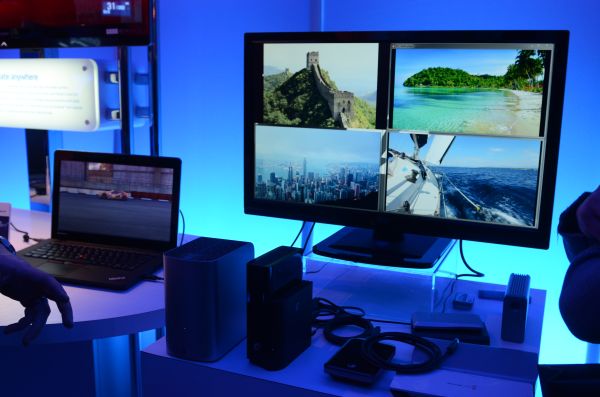





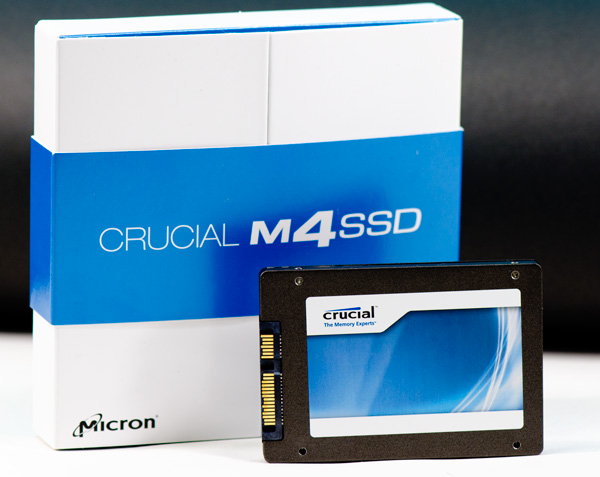

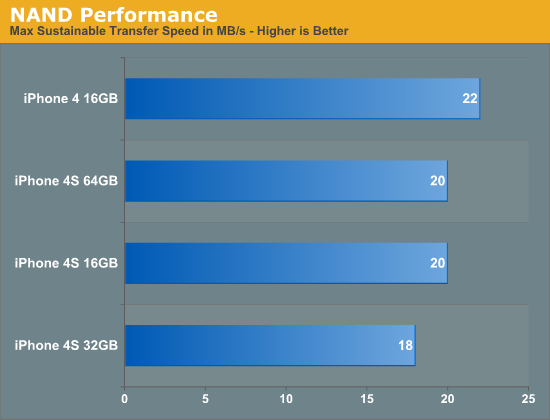


_thumb.JPG)
_thumb.JPG)
_thumb.JPG)
_575px.jpg)
_575px.jpg)
_575px.jpg)
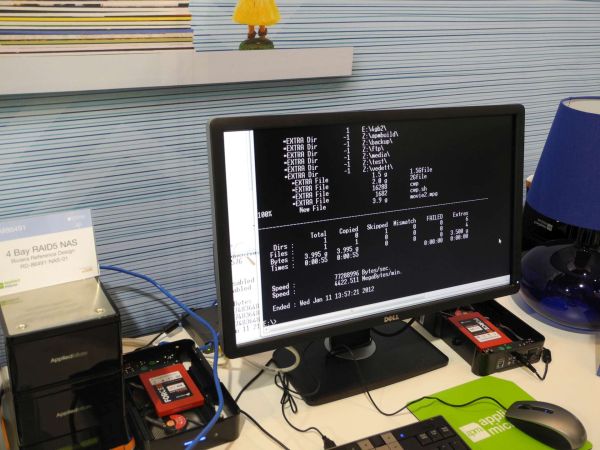
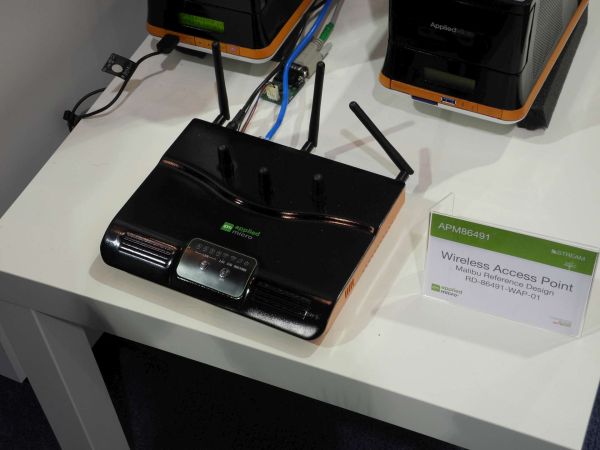
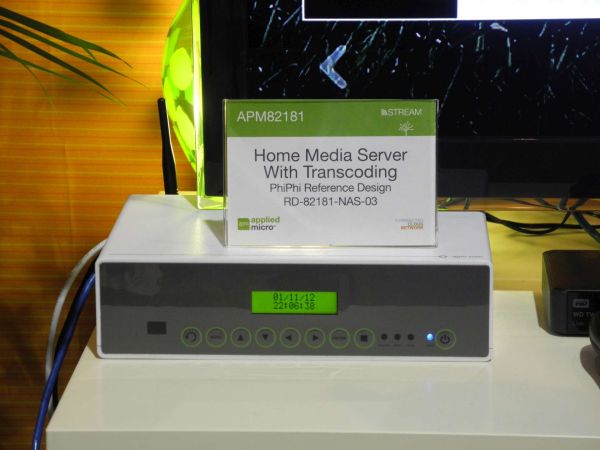
















Bookmarks